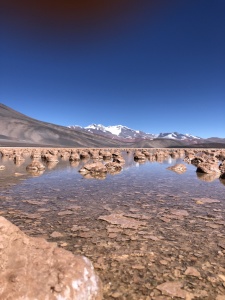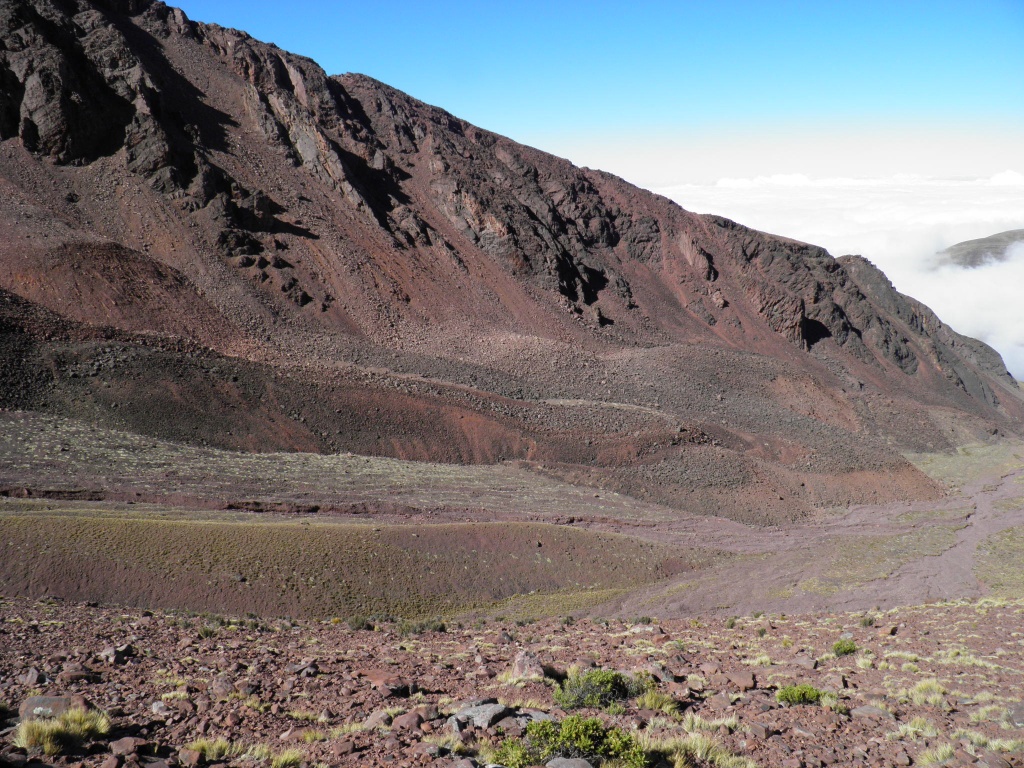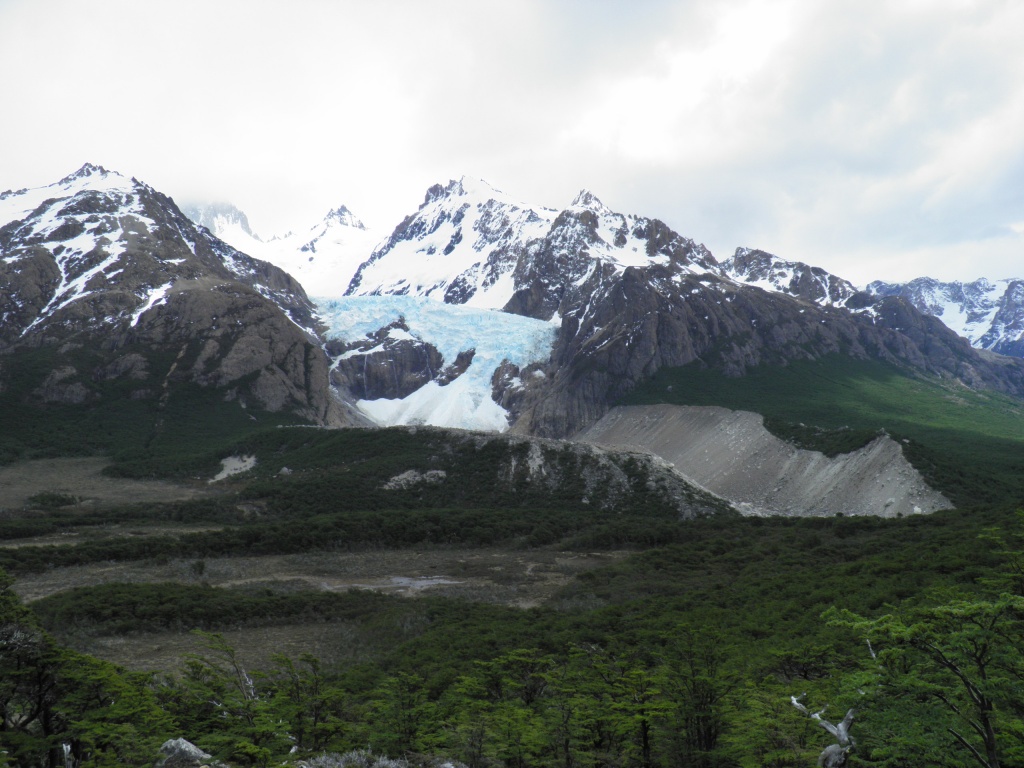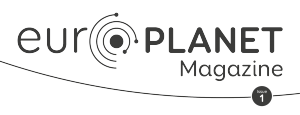Searching for Answers to Life’s Big Questions
Fernando J Gomez and Mateo Martini (CICTERRA/CONICET-Universidad Nacional de Córdoba, Argentina) explore planetary field analogues in Argentina.
Read article in the fully formatted PDF of the Europlanet Magazine.
The ability to differentiate between biologically and abiotically generated structures and processes observed in planetary landscapes is extremely important in answering our most fundamental question: are we alone in the Universe?
Sedimentary deposits contain the earliest evidence for life on Earth, therefore, sedimentary features are a key focus for missions searching for biosignatures on other planetary surfaces, such NASA’s Perseverance rover at Jezero Crater on Mars.
Field studies of Earth analogues for extraterrestrial environments have proved useful in understanding and interpreting data sent back by planetary orbiters and rovers. Finding good analogues, although challenging, is possible, particularly on a global scale.
From 2021, two sites in the Argentinian Andes are being added to the suite of planetary analogue field sites offered by Europlanet 2024 Research Infrastructure (RI) to support the study of sedimentary systems from an astrobiological perspective.
Argentina, given its location, extended geographical range and variable geography provides a plethora of ‘extreme’ environmental conditions – from low to high altitude, cold to warm, wet to dry – where microbial life thrives. These sites are thus good targets for exploring how microbial life can adapt to environmental challenges, as well as how biosignatures are generated and preserved within sediments and sedimentary rocks.
Recent research at high-altitude Andean lakes in northwestern Argentina, such as the Laguna Negra (Gomez et al. 2014, 2018, 2020; Boidi et al. 2020; Mlewski et al. 2018; Beeler et al. 2020; Buongiorno et al. 2019), has focused on understanding microbial life and biosignatures in challenging environmental conditions such as high ultraviolet radiation influx, low water activity, variable pH, extreme temperatures and winds.
Microorganisms that thrive under these multiple forms of stress (poly-extremophiles), typically in hypersaline lakes and hot springs, are interesting targets to study because a combination of microbial processes, sedimentation and in-situ (authigenic) mineral precipitation drives the formation of ‘microbialite’ structures (below). Microbialites are found in the Earth’s ancient sedimentary record and represent our oldest biosphere fossil evidence.

Hundreds of lakes and wetlands in the high-altitude Andes, including Laguna Negra (see Figure 1, the banner image), Socompa and Diamante are currently active in creating microbialites. The structures develop over variable volcanic bedrock (from andesitic to basaltic), where weathering processes, sediment generation, transport and deposition, as well as mineral precipitation can be studied. In addition to providing useful information to understand extraterrestrial environments observed today, the mineralising microbial systems in these Andean lakes are unique natural laboratories that have many of the environmental criteria suggested for the early Earth and Mars.
In these systems, where microbialites are common, a spectrum of ongoing biotic and abiotic processes and potential biosignatures can be studied and tested, improving our ability to interpret the sedimentary record on our planet and beyond. Comparing microbialites with similar but abiotically-generated structures may provide some insights for similar sedimentary systems that are currently a target for investigation on the martian surface, such as Jezero Crater or the Oxia Planum, where ESA’s Rosalind Franklin ExoMars rover will land in 2022.
The northwestern Andean region of Argentina and the Patagonia Andes of South Argentina also provide an interesting set of planetary analogues. These sites include a variety of sedimentary systems where glacier-related processes, active ice and rock glaciers (Figure 3 and 4) and sedimentary deposits from glaciers and glacial lakes have developed under variable climate conditions. Many of these systems occur over a basaltic bedrock, providing extremely useful Earth-based analogues for cold extraterrestrial environments on Mars and icy moons of giant planets.

Rock glaciers in northwestern Argentina provide cover for flowing water and ice, and can provide habitable niches for microbial life (Figure 3). Credit: M Martini. 
Planetary analogue field sites in the Argentinian Andes include a variety of sedimentary systems where glacier-related processes have developed under variable climate conditions (Figure 4). Credit: M Martini.
Rock glaciers (Figure 3) in northwestern Argentina provide an interesting sedimentary system that has been somewhat overlooked from an astrobiology and climate-evolution perspective to date. Under cold and arid climate conditions, the protection provided by the rock cover for flowing water and ice can provide habitable niches for microbial life. An understanding of rock glacier dynamics is also useful in better constraining the evolution of Earth’s climate over its history (Martini et al. 2017), which can then be extrapolated to the climates of Mars and other planets.
The Patagonia Andean region is itself a record of glacial activity since the late Miocene (11.63 million years ago), and currently the Southern Patagonia ice field is the la gest extra-polar ice mass in the southern hemisphere, covering 13 000 km2. The glaciers are more developed in the west (wetter) side of the Patagonian Andes but, in the past, they extended eastward to the Patagonian Steppe and were associated with numerous lakes. The resulting sedimentary record can help us to understand recent paleoclimate evolution (Kaplan et al. 2016) and its impact in the biosphere record.
Adding these new sites to the suite of Europlanet 2024 RI planetary field analogues will increase the range of environments for collaborative research between scientists from Europe, Argentina and the wider international community. The insights provided will help us to better understand current and future exploration of other planetary environments, and hopefully contribute to answering that fundamental question of whether we are alone in the Universe.


